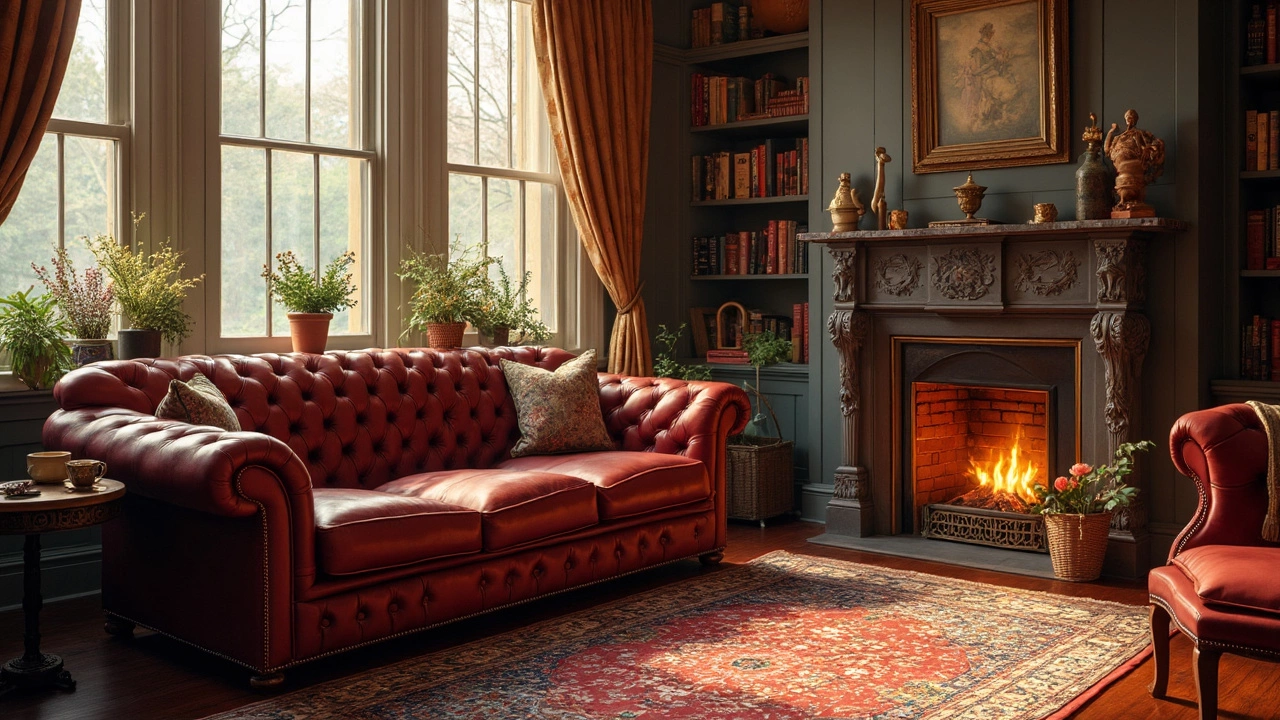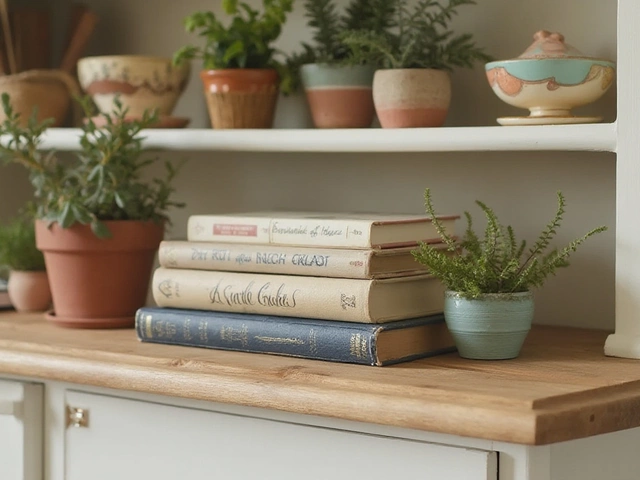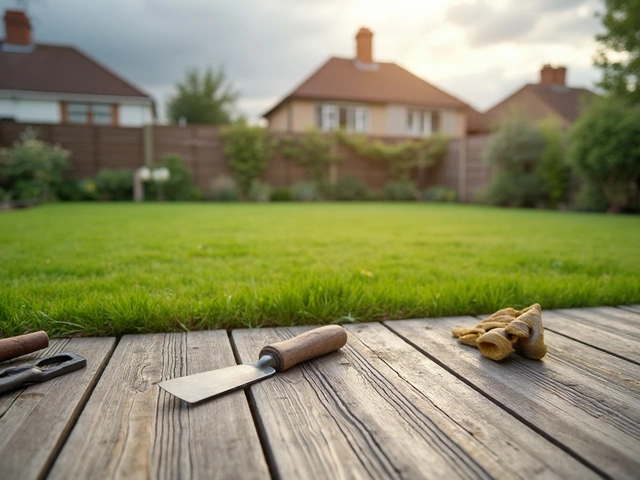 23
Mar,2025
23
Mar,2025
Ever wondered how long that comfy couch in your living room is going to last? Well, you're not alone. Couches, just like any other piece of furniture, have a lifespan. But the good news is, with a little knowledge and care, you can make sure your favorite seat stays in top shape for as long as possible.
The lifespan of a couch typically ranges from 7 to 15 years. This might seem like a broad range, and that's because a lot depends on factors like the quality of materials, the frame's sturdiness, the frequency of use, and how well you take care of it. Sounds a bit like taking care of a pet, right?
Now, one key thing to remember is that the materials used in your couch play a huge role in determining its longevity. For instance, a leather sofa might outlast a fabric one, but it requires a different kind of upkeep. So, knowing what your couch is made of can clue you in on what you can expect in terms of its lifespan.
- Factors Influencing Couch Longevity
- Lifespan of Different Couch Materials
- Recognizing Wear and Tear
- Caring for Your Couch: Tips and Tricks
- When It's Time to Replace Your Couch
- Shopping for a Long-lasting Sofa
Factors Influencing Couch Longevity
When it comes to how long a couch will last, a bunch of things come into play. Understanding each can really help get the most out of your furniture investment. Let’s break it down.
1. Material Quality
The type of materials used in making your sofa is a big player in its longevity. A leather couch might wear differently compared to one made from synthetic fabrics. Leather, for instance, is durable and gets this cool vintage look over time but can be prone to scratches. Fabric couches offer comfy vibes but might stain easier unless it’s treated or a stain-resistant fabric is used.
2. Frame Construction
A solid frame equals a long-lasting couch. It’s like the foundation of a house—the stronger it is, the longer everything stays up. Couches with kiln-dried hardwood frames usually edge out the competition. They provide sturdiness that can withstand years of Netflix marathons and random jumping (admit it, we’ve all done it).
3. Cushion Fillings
The type of filling in the cushions affects both comfort and lifespan. High-density foam tends to hold its shape better over time compared to lower-density alternatives. It’s like the superhero of cushion materials – resilient and supportive, but it might lose its charm if neglected.
4. Usage Patterns
Do you treat your couch like a second bed? Or perhaps it's a trampoline for the kids? The more a couch is used and abused, the faster it wears out. Plus, the placement of your sofa (like in direct sunlight) can also play a defining role in how the upholstery holds up over time.
5. Maintenance and Care
Regular maintenance can add years to your couch’s life. Vacuuming regularly, using fabric protectors, and promptly treating stains can help preserve the upholstery. Simple care tips like flipping cushions to even out wear can also go a long way. It’s a bit like brushing your teeth. Consistency is key.
6. Environmental Factors
Believe it or not, where you live can affect your couch's durability. High humidity can lead to mold issues, whereas super dry climates may cause leather to crack. It’s like the living room equivalent of keeping up with the weather app to decide your outfit for the day.
| Factor | Impact on Longevity |
|---|---|
| Material Quality | High |
| Frame Construction | High |
| Cushion Fillings | Medium |
| Usage Patterns | High |
| Maintenance | High |
| Environmental Factors | Medium |
Lifespan of Different Couch Materials
There’s no one-size-fits-all answer when it comes to how long your couch will last, especially when you dive into the world of different materials. Each type carries its own set of pros, cons, and quirks that can affect the overall couch lifespan. Let's break it down.
Leather
Leather is a popular choice for its durability and timeless style. A well-made leather sofa can last up to 15 years or more. However, it does need some TLC to keep it looking its best. Regular cleaning and conditioning keep the leather from drying out and cracking. If you’ve got pets, watch out for those claws—it’s not scratch-resistant!
Fabric
Fabric couches, on the other hand, are all about comfort and variety. Depending on the weave and type of fabric, these sofas generally have a lifespan of 7-12 years. Natural fibers like cotton and linen look great but can wear out faster if not maintained properly. Synthetic fabrics often offer greater durability and stain resistance, which is a lifesaver for families with kids.
Microfiber
If you’re looking for something that’s both comfy and long-lasting, microfiber might be the way to go. This material is soft and resistant to stains, and with proper care, a microfiber couch can last around 10 years or more. It's often the unsung hero in busy households.
Wooden Frame and Support
It's not just about what's on the outside; what's underneath matters too. A strong, kiln-dried hardwood frame can extend the life of your couch significantly compared to cheaper, particleboard-based frames. Always opt for a solid frame if longevity is your main goal.
Here's a quick look at a table to give you an idea of different materials and their potential sofa longevity:
| Material | Average Lifespan (Years) |
|---|---|
| Leather | 15+ |
| Fabric | 7-12 |
| Microfiber | 10+ |
Understanding what each material brings to the table helps make informed decisions when buying your next couch. And who doesn’t love an informed decision, right?
Recognizing Wear and Tear
So, how do you know when your couch is starting to show its age? Well, it’s not always about visible rips or stains; sometimes, the signs are a little more subtle. Recognizing the wear and tear early can help you decide whether to repair it or start thinking about a new one.
Common Signs of Couch Aging
The first thing to notice is the cushioning. If your favorite spot sinks a bit too much after a long day, it might be time to check what's going on inside. The springs or foam may have started to give way.
Next, take a closer look at the fabric. Sure, stains and spills happen, but if you spot saggy arms or fraying edges, these are tell-tale signs that your couch is aging. An experienced upholsterer I know once said, "A couch that's sagging in the middle is like a smile missing its front teeth. You can't unsee it."
"Furniture is meant to be lived in, but it needs some TLC just like anything else to keep it looking its best," says Emily Shaw, a renowned interior decorator.
Structural Integrity
The foundation of any couch is its frame. If your sofa creaks or wobbles when you sit, it's trying to tell you something. It’s showing signs that the wood or metal frame might be weakening.
Evaluating Leather vs. Fabric
When it comes to couch lifespan, leather and fabric sofas show their age in different ways. Leather usually develops a lived-in look over time, while fabric might just look tired. Keep an eye out for any peeling or cracked leather, which is a clear cue to consider touch-ups or replacements.
Checklist for Wear and Tear
- Inspect cushions for lumps or sagging.
- Look for frayed seams and edges.
- Listen for creaks or groans in the frame.
- Check for changes in comfort level.
Paying attention to these details not only helps in maintaining the looks but also ensures the overall health of your beloved couch. So next time you flop onto your sofa, let it tell you how it's holding up!

Caring for Your Couch: Tips and Tricks
Your couch might be the most used piece of furniture, and keeping it in top shape is easier than you think. With a few straightforward habits, you can significantly extend the couch lifespan and keep it looking great.
Regular Cleaning
Dust and dirt are a couch's worst enemies. Regular cleaning is a must. For fabric sofas, vacuum the cushions and use a lint roller to pick up stray hairs. Leather couches need a soft cloth to wipe away dust and a special conditioner to keep the leather supple.
- Vacuum fabric sofas weekly to prevent dirt from getting embedded in the fibers.
- Use a leather conditioner every 6-12 months to keep leather sofas from cracking.
Avoid Direct Sunlight
Sunlight can fade the fabric and cause leather to crack, impacting the sofa longevity. Try positioning your couch away from direct sunlight or use curtains during peak hours.
Rotate Cushions
Simple, but effective - rotate and flip cushions regularly to ensure even wear. This helps keep them in good shape and maintains their comfort level.
Handle Spills Quickly
Accidents happen, and when they do, it's crucial to act fast. Blot spills with a clean cloth immediately, rather than rubbing, to prevent stains. Use a fabric-friendly cleaner for any persistent spots.
Paws and Claws
Pets are lovely, but their nails might not be friendly to your furniture. Consider placing a throw or blanket on the couch where your pets usually cuddle. This protects the fabric while still allowing cuddle time.
Invest in a Good Slipcover
If you have a fabric sofa, a slipcover can be a life-saver. It's easier to wash a cover than to clean a whole couch, and it adds an extra layer of protection from daily wear.
All these small efforts can add years to your couch’s life, keeping it sturdy and inviting for many hangouts to come. So go on, get cozy on your long-lasting, well-cared-for couch!
When It's Time to Replace Your Couch
Knowing when to replace your couch can be tricky, but there are a few tell-tale signs that shout it's time for an upgrade. A **couch lifespan** doesn’t extend forever, and ignoring these signals might mean you're missing out on comfort and style.
Comfort Goes Out the Window
Let's face it, a couch is all about comfort. If you're sinking into it like it's swallowed you whole or there's a mysterious spring poking you every time you sit down, that's a major red flag. Over time, cushions lose their plumpness and the frame may start sagging. When sitting down feels more like a chore than a chill, it's probably time to say goodbye.
Visible Wear and Tear
Does your couch look like it's fought a few too many battles? Ripped fabric, worn-out arms, or a sagging back can make your living room decor look tired. This is especially true if fabric rips are beyond simple repairs or professional cleaning won't get rid of those stubborn stains.
Stubborn Stains and Smells
Even if you’ve taken great care of your sofa, sometimes life happens—a spilled drink here, a pet accident there. If your couch has turned into a patchwork of unsightly stains or smells that won’t go away, even after a good scrub, consider upgrading.
Style Feels Outdated
The sofa is a centerpiece to your home’s interior design. If your current one screams 90s when you've moved onto a 2025 minimalist vibe, it may be time to invest in a piece that better matches your style. This not only freshens up your space but may improve the room’s overall flow.
Frequent Repairs
If you've begun to form a close relationship with your sofa repairman, that’s a problem. Continually fixing broken legs, re-stuffing cushions, or dealing with a creaky frame can end up costing more than investing in a new piece. After all, there’s only so much duct tape can do!
Upgrading your couch is a big decision, but acknowledging these signs can save you discomfort and keep your home looking its best. Remember, the right time to replace your couch is when it can't serve its primary purpose anymore. Keep these indicators in mind, and keep your space stylish and cozy!
Shopping for a Long-lasting Sofa
So, you're in the market for a new couch, and you want it to stand the test of time. Smart move! A long-lasting sofa is not just about aesthetics but also about quality and resilience. Here’s how you can make sure you're getting the best bang for your buck.
1. Focus on the Frame
The skeleton of any couch is its frame, and that's where your attention should be. Look for solid wood frames—hardwoods like oak, maple, or ash have a reputation for durability. Metal and particleboard frames might be cheaper, but they risk coming apart sooner. Remember, the sturdier the frame, the longer your couch lifespan will be.
2. Choose Quality Upholstery
Next up is the fabric. If you're after durability, leather and tightly woven textiles are your best pals. They resist wear and tears better than their loosely woven counterparts. Plus, leather, while pricier, often ages like fine wine, developing a patina that adds character.
3. Check the Cushions
Cushions determine comfort, and quality cushions will retain their shape over time. High-density foam cushions provide excellent support and bounce back after use, maintaining that fresh look for years. Removable covers are a great addition, allowing easy cleaning and replacements if needed.
4. Consider the Joinery
How the frame pieces connect is essential. Complex joinery like wooden dowels, brackets, metal screws, or staples generally means a more stable sofa. Avoid couches held together primarily by glue or nails.
5. Test for Comfort and Strength
Don't skip the sit test—literally. Pop a squat, lie back, and think about how it feels. Ensure it feels sturdy when you sit. While you're at it, lift one side of the couch slightly off the floor. If the other leg lifts too, you've got a solid piece; if not, it's back to the drawing board.
Now, here's a quick breakdown of potential materials and their costs:
| Material | Average Cost Range | Expected Lifespan |
|---|---|---|
| Leather | $1,000 - $5,000 | 15-20 years |
| Microfiber | $500 - $2,000 | 7-10 years |
| Cotton Blend | $600 - $2,500 | 5-8 years |
Shopping for a couch doesn't have to be a daunting task. With a bit of knowledge, you can find a piece that harmonizes durability with style, ensuring your furniture remains a centerpiece for years to come.




